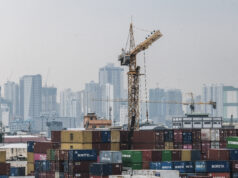BoP swings to surplus in 2019
By Luz Wendy T. Noble
THE PHILIPPINES welcomed more dollars in 2019, driving a balance of payments (BoP) surplus that was the biggest since 2012 and reversing the deficit in 2018, the Bangko Sentral ng Pilipinas (BSP) said on Monday.
Data from the central bank showed that BoP — which is the summary of the country’s economic transactions with the rest of the world within a given period — was at a surplus of $7.843 billion in 2019, the biggest surfeit since the $9.236 billion tracked in 2012.
The surplus was a turnaround from the $2.306-billion deficit in 2018.
This also compares to the BSP’s upgraded $4.8-billion surplus projection for 2019 penciled in last November, from the $3.7-billion surplus forecast it gave in May.
“Based on preliminary data, the surplus was supported by higher net receipts of trade in services, personal remittance inflows from overseas Filipinos and sustained net inflows of foreign direct investments and portfolio investments,” the central bank said in a statement.
BoP settled at a $1.57-billion surplus in December 2019, the highest since the $2.7-billion surplus in January of the same year. However, December’s surplus is thinner compared to the $2.442 surplus seen in December 2018.
“Inflows in December 2019 reflected the BSP’s net foreign exchange purchases from its foreign exchange operations and income from its investments abroad, and increase in the national government’s net foreign currency deposits,” the central bank said.
Gross international reserves (GIR) stood at $87.84 billion as of end-December which, according to the BSP, covers more-than-ample liquidity buffer for 7.7 months’ worth of imports of goods and payments of services and primary income.
“It is also equivalent to 5.5 times the country’s short-term external debt based on original maturity and 4.3 times based on residual maturity,” the central bank said.
Analysts attributed the turnaround to surplus in BoP to a narrower trade deficit, continued strong support from OFW remittances and business process outsourcing revenues, as well as inflows from Philippine offshore gaming operators (POGOs).
“BOP surplus…[was] largely reflective of the record high gross international reserves amid narrower trade deficit, as well as the sustained growth in the country’s structural US dollar/foreign currency inflows such as OFW remittances, BPO revenues, foreign tourism receipts, POGO revenues, and net foreign investment inflows,” Rizal Commercial Banking Corp. Chief Economist Michael L. Ricafort said in an e-mail.
University of Asia and the Pacific professor Victor A. Abola attributed the 2019 BoP surplus to both the lower trade deficit and the buoyant POGO sector.
The surplus reiterates the resiliency story of the country’s economic growth, according to UnionBank of the Philippines Inc. Chief Economist Ruben Carlo O. Asuncion.
“Even with the uncertainties brought by the global trade war in the last 17 months or more, the Philippines’ external position is still very robust,” Mr. Asuncion said in an e-mail.
Data from the Philippine Statistics Authority (PSA) showed that trade deficit stood at $34.59 billion in the 11 months to November, thinning from the $39.36 billion gap seen in the same period of 2018. This was on the back of the eight consecutive months of decline in imports.
Meanwhile, cash remittance from OFWs grew by 4.4% year on year to $27.231 billion in the January to November period. The BSP targeted to grow remittances by 3% in 2019.
For 2020, the BSP projects a BoP surplus of $3 billion. Analysts said this year will be a different story given the trade deficit environment.
“2020 may represent a different scenario with the current account deficit expected to widen with import demand set to rise on government spending and private investment momentum returns after falling into contraction in 2019,” ING Bank-NV Manila Senior Economist Nicholas Antonio T. Mapa said in an e-mail.
Meanwhile, Mr. Abola warned of a “worsening” trade deficit flows.
“Mag-woworsen na uli ang trade deficit flows (The trade deficit flows will again worsen)…OFW [remittance] would not be sufficient to cover the deficit,” he said.
With this, what is needed is an inflow of both foreign portfolio investments (FPI) and hot money, as well as better foreign direct investment figures, he added.
Year-to-date, FDI fell 32.8% to $5.79 billion in the January to October period. The government targets $8.8 billion worth of FDI for 2019.
Meanwhile, hot money saw a net outflow of $1.9 billion in 2019 as global uncertainties took its toll on investor sentiment on emerging economies, including the Philippines.
The net outflow is a turnaround from the $1.204 billion of net inflows seen in 2018. It also fell short of the $8 billion worth of net inflows the BSP projected for 2019.
For Mr. Asuncion, the expected normalization in government spending given that the national budget was passed on time will support economic prospects for this year.
“The perception on the economic prospects of the Philippines will further improve, resulting to stronger net inflows of foreign direct and portfolio investments,” he said.
Meanwhile, Mr. Ricafort pointed that the diversification of foreign borrowings bodes well for BoP in 2020, with the Bureau of the Treasury set to issue euro bonds.
“Continued increase and diversification of the government’s foreign borrowings for 2020 would also add to the country’s BOP surplus for 2020, on a cash flow perspective, that would also add up to the country’s GIR, which already reached new record highs,” Mr. Ricafort said.



